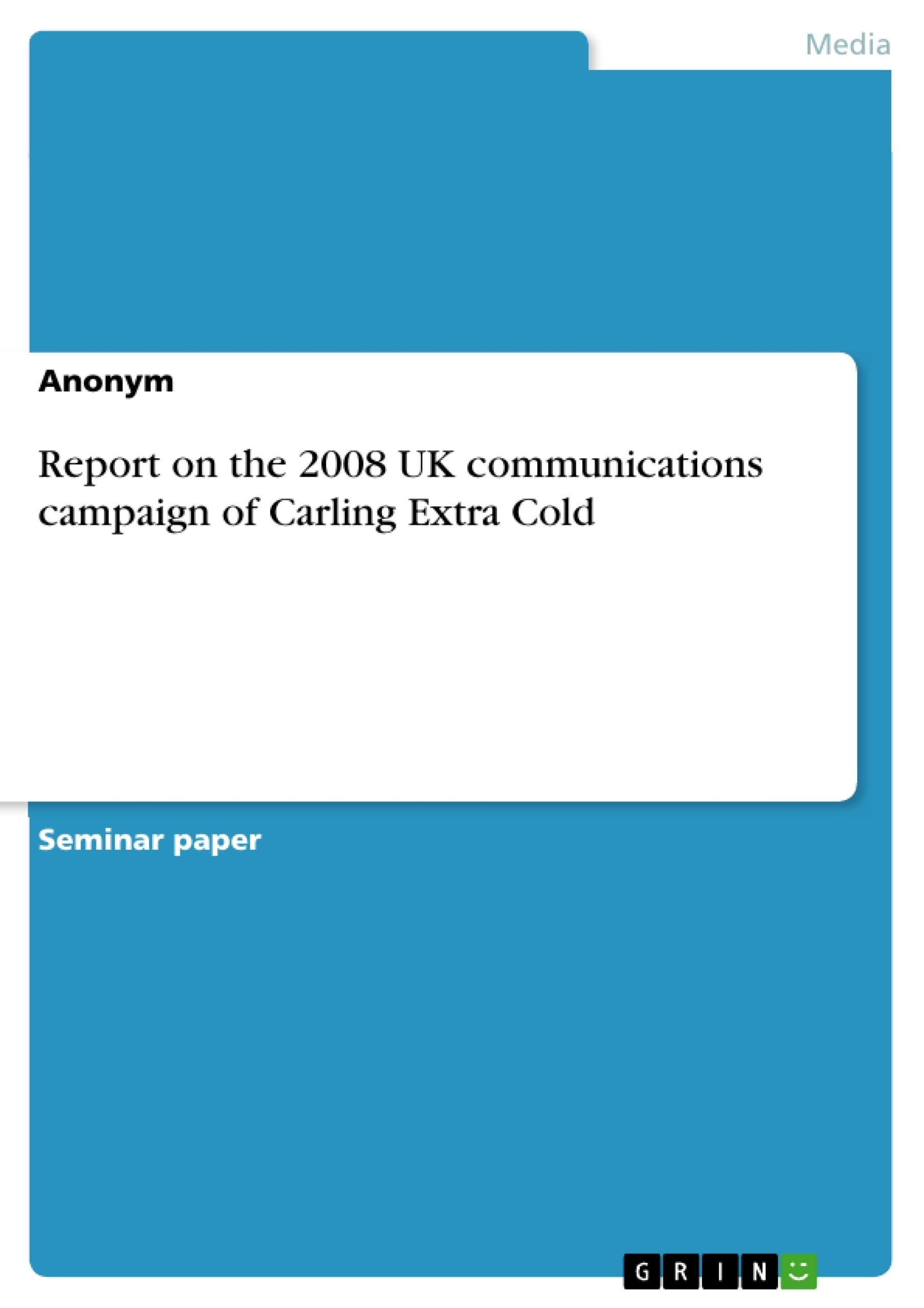As it is an alcoholic drink, the only legal target group are people over the age of 18
years. In addition the adverts are specially designed for the United Kingdom.
The advert on TV only shows male actors, that is why only men will be able to identify
themselves with the actors. Men are Carling's target audience, especially men
interested in football. These men like watching TV at home as well as watching
football in the stadium. Besides football fans, the brand tries to attract men who like
music. I assume the primary target group are British men aged 18 to 28 and the
secondary target audience are British men at the age of 29 to 35. To inspire the
target group Carling is the organiser of the Carling football Cup and acts as sponsor
of music festivals.
- Quote paper
- Anonym (Author), 2009, Report on the 2008 UK communications campaign of Carling Extra Cold, Munich, GRIN Verlag, https://www.grin.com/document/144226



